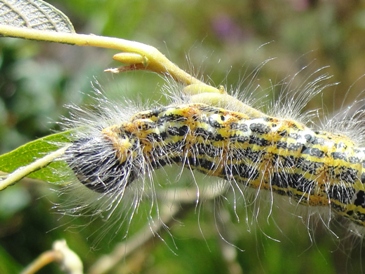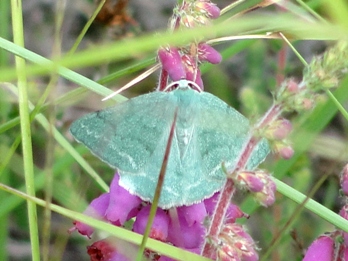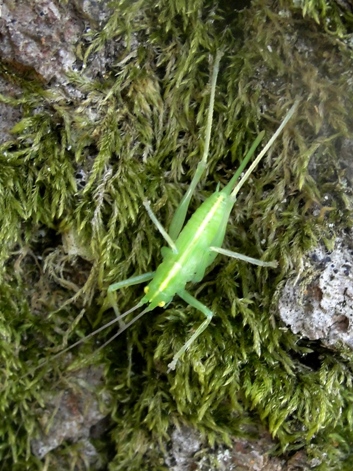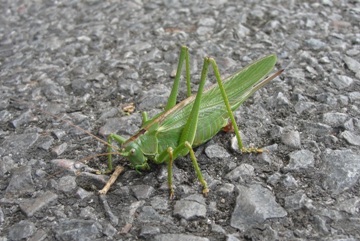Not pussy cats or big cats, but caterpillars. Many species, especially moth larvae are more visible as they grow larger or consume large amounts of leaves making it more obvious that something is stripping plants of their leaves. This is of course natural and no permanent damage occurs to the plants. A buff tip moth larvae has stripped a young sallow of leaves, it remains whilst its siblings are already marching away from the tree ready to pupate somewhere.
Emerald moths are some of the most beautiful coloured of geometrid moths. This is the small grass emerald, on its foodplant heather; in this case the local Dorset heath ( Erica ciliaris)
Crickets are also more obvious now as they chirp or leap about in vegetation.All grasshoppers and crickets start life in springtime as eggs then small nymphs and take all summer to grow into more noticeable adults before they can sing. grasshoppers are mainly vegetarian and stridulate with their legs, whilst crickets are omnivores usually and sing with their wing case parts. The southern oak bush cricket(Meconema meridianale) is a rather new inhabitant to the UK and looks very similar to out common oak bush cricket.(see archive post).
The Great green bush cricket is our largest species in the UK. They are mainly southern in their distribution and stridulate loudly in the warm sunshine or mainly at night.
this female was hit by a vehicle but lived, despite her ovi coming out and hardening in the hot sun.Hopefully she had managed to lay some of them.




